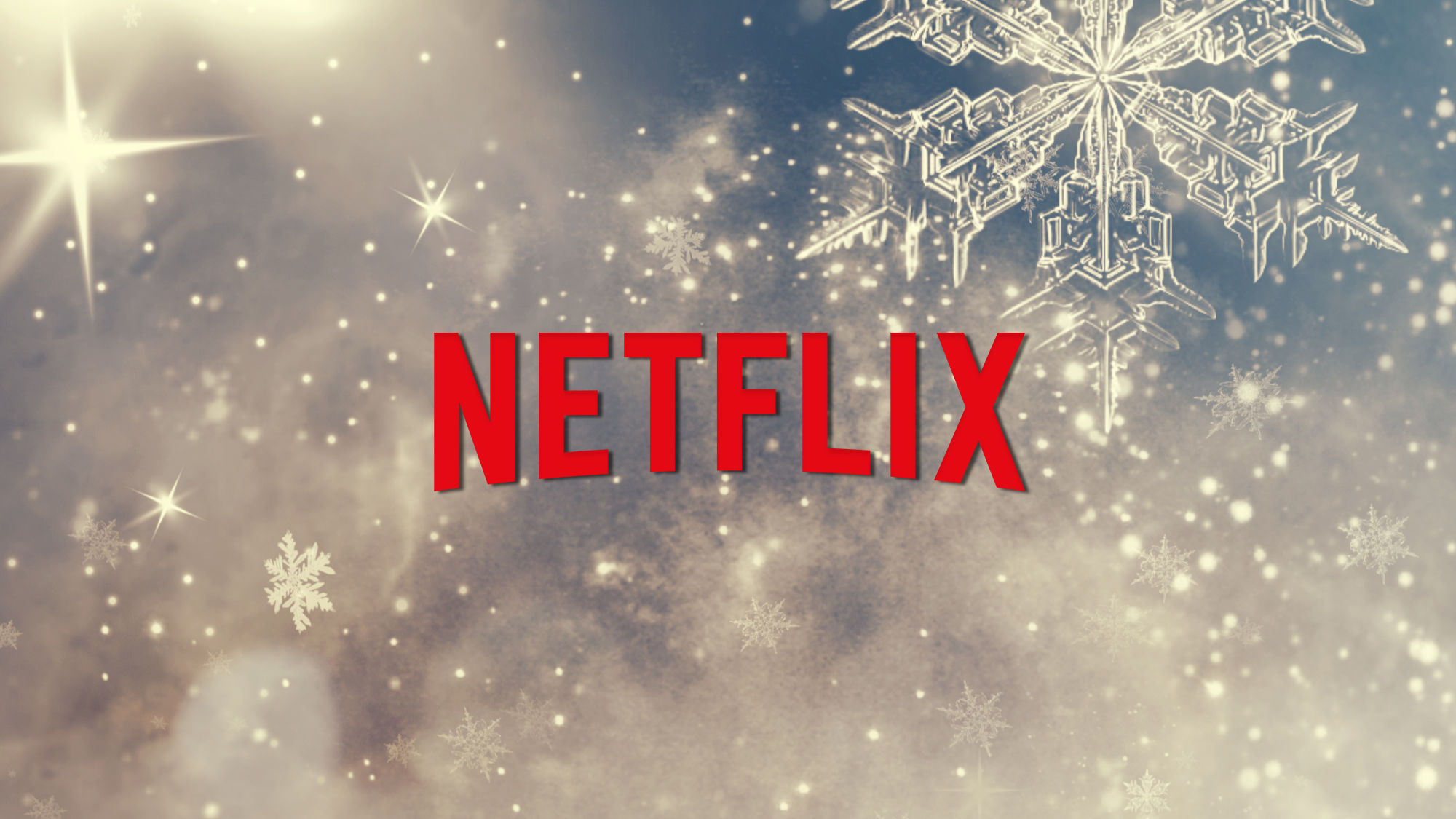The best hiking boots to buy in 2025 — tested and rated for mountain trails and casual hikes
The best hiking boots for any condition, tested for comfort, style and support

The best hiking boots should keep you comfy, stable and dry as you trek, no matter what the weather. We tested a range of the best hiking boots, wearing them out in the mud, slush and rain as well as in dry, dusty climates. As we trudged and traipsed, we assessed each pair for comfort, grip, foot and ankle protection, and of course, weatherproof qualities.
We've rounded up a range of styles and budgets so that you can find the best pair of hiking boots for your next adventure. See which models made it onto our guide — including options from Hoka, Salomon, Timberland and more — and why we love them.
Best hiking boots to buy right now
Why you can trust Tom's Guide
The best all-around hiking boots
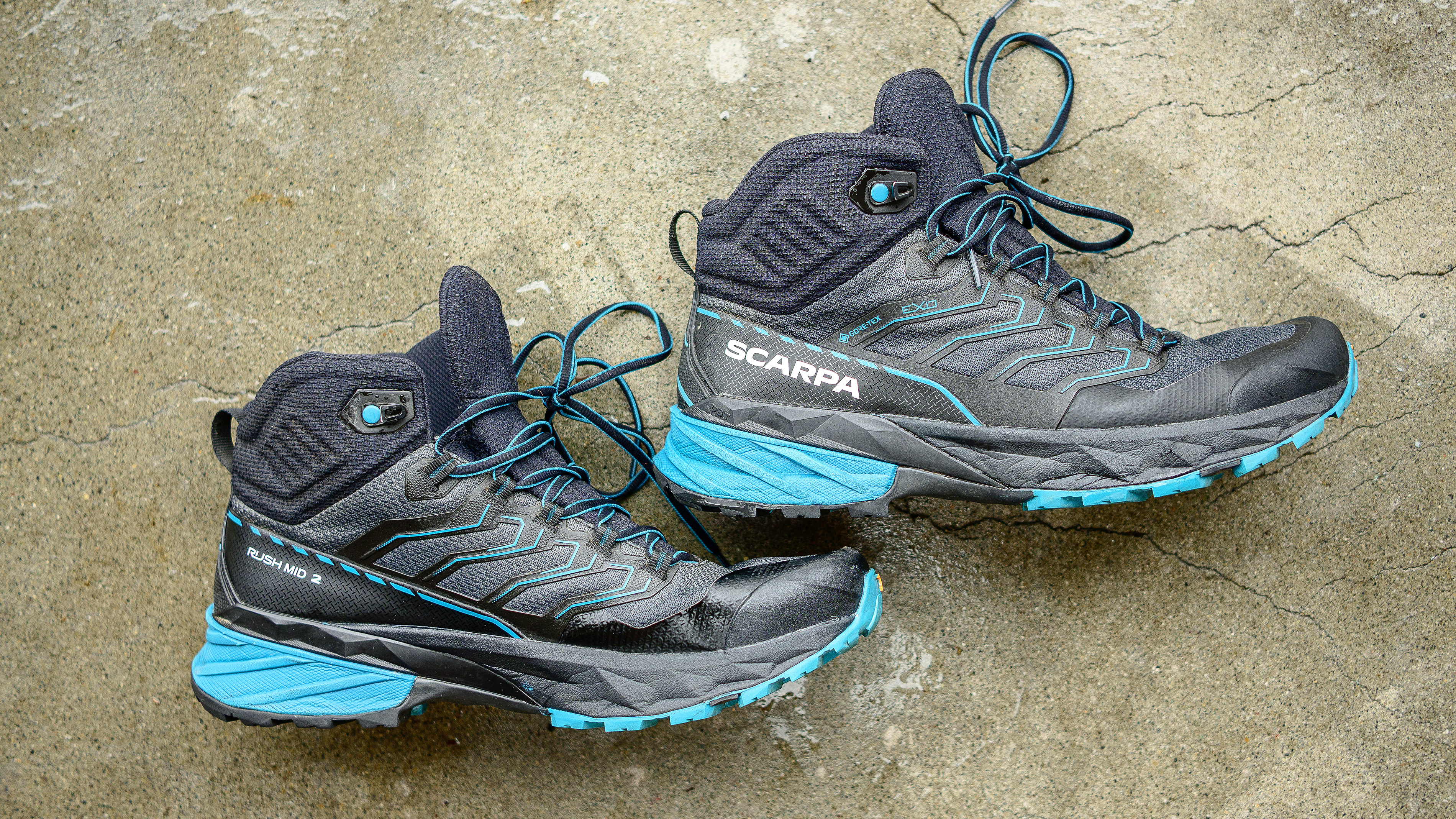
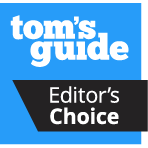
1. Scarpa Rush 2 Mid GTX
Our expert review:
Specifications
Reasons to buy
Reasons to avoid
In 2025, your hiking boots don't have to look "granola" if you don't want them to — case in point: the Scarpa Rush 2 Mid GTX. These fly Italian-made boots are as featured-packed as they are easy on the eyes.
Built to feel like a pair of trail running shoes with the ankle support of a hiking boot, the Scarpa Rush 2 provides solid overall stability in a fairly lightweight package. The upper is GORE-TEX lined for waterproofing, while the outsole is extremely grippy. Traction was no issue even on wet rocks and slick, leaf-littered inclines. For toe protection, the outsole wraps around the front of the shoe generously.
Fairly true to size, the Scarpas may fit a little snuggly at first, but loosen up as you break them (as any solid pair of hiking boots might). In our testing, they handled everything from dusty, rocky scrambles to rainy, muddy treks like a champ. We even submerged them (briefly) in the ocean with nothing but dry socks to report.
The midsole is plush and responsive without being overly bouncy. Even on long hikes over rough terrain, we found the Scarpas plenty comfortable. The upper is also well-padded, which keeps the boots feeling comfortable, even when tied tight. Not sure on sizing when it comes to boots, read our guide how hiking boots should fit.
Looks-wise, they are a lot less chunky than other hiking boots on the market, with colors and subtle styling patterns that are eye-catching and well-executed without being loud or obnoxious. More importantly, after many miles of trekking, the Scarpa Rush 2 Mid GTXs remain one of the most comfortable hiking boots we've ever worn.
Best hiking boots for wide feet

2. Merrell Moab 3 Mid Waterproof
Our expert review:
Specifications
Reasons to buy
Reasons to avoid
Merrell's Moab 3 boots are distinctly American: They're big, they're boxy, and they give your feet plenty of room to move about in. Emulated by many other bootmakers over the years, Merrell's models are durable without being stodgy and are often sufficiently insulted to do double duty as winter boots for urban commuters.
True to form, the Moab 3's were one of the roomiest models we tested. If you order a wide width, wide is what you shall receive. And the boots offer good lower ankle support, lots of upper cushioning, a padded tongue, and a solid toe cap to keep you from stubbing your toes.
The Moab 3's have one of the harder soles we tested, but we also found it was particularly adept in certain challenging situations. The Vibram TC5+ sole that Merrell uses for these boots is specifically designed to work on wet ice. It does a remarkable job doing so, as if there are tiny cleats under foot when you're walking across patches of melting ice. It's also significantly better than other boots at holding onto slick rocks that we skipped across while fording a local stream.
There are softer and more supple boots on the market, but no other model provides such a well-rounded combination of grippiness, insulation, and comfort at such a competitive price.
Best hiking boots for ankle stability
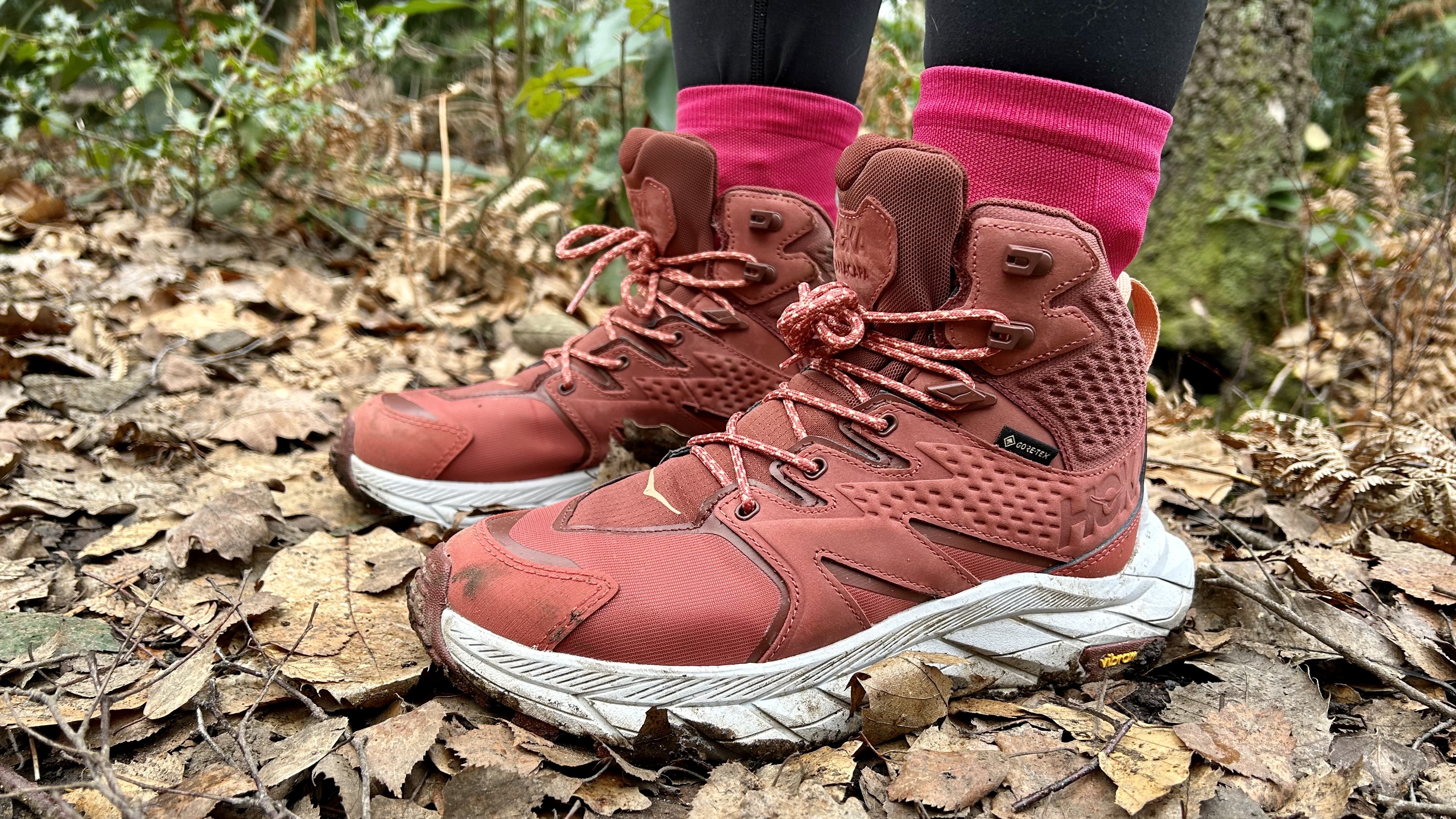

3. Hoka Anacapa Mid GORE-TEX
Our expert review:
Specifications
Reasons to buy
Reasons to avoid
We were impressed with how comfortable this Hoka walking boot was. Founded by two French adventure athletes who clearly know a thing or two about mountains, the boot feels lightweight underfoot, with a protective yet responsive midsole foam. We had no problem doing faster hikes in this shoe and appreciated the extended heel geometry, which allowed for a stable feel on the trails.
Like a lot of the best Hoka running shoes, this boot came up a little narrow, so if you're between sizes, it's definitely worth sizing up. It's a shame there are no wider versions of this boot like there are in Hoka's running shoes. The Anacapa did give a little after 50 miles or so, but it definitely feels snugger than other boots on test. The lacing system didn't budge and felt supportive around the ankle on unstable trails. The boot also comes in a low version, for hikers who prefer a shorter design.
Testing these shoes in all weathers, we were also impressed with the GORE-TEX waterproofing, which kept our feet dry during wet, muddy walks. This is a great hiking boot for beginners who are looking for a comfortable and supportive boot that they don't have to spend months breaking in.
Best waterproof hiking boot
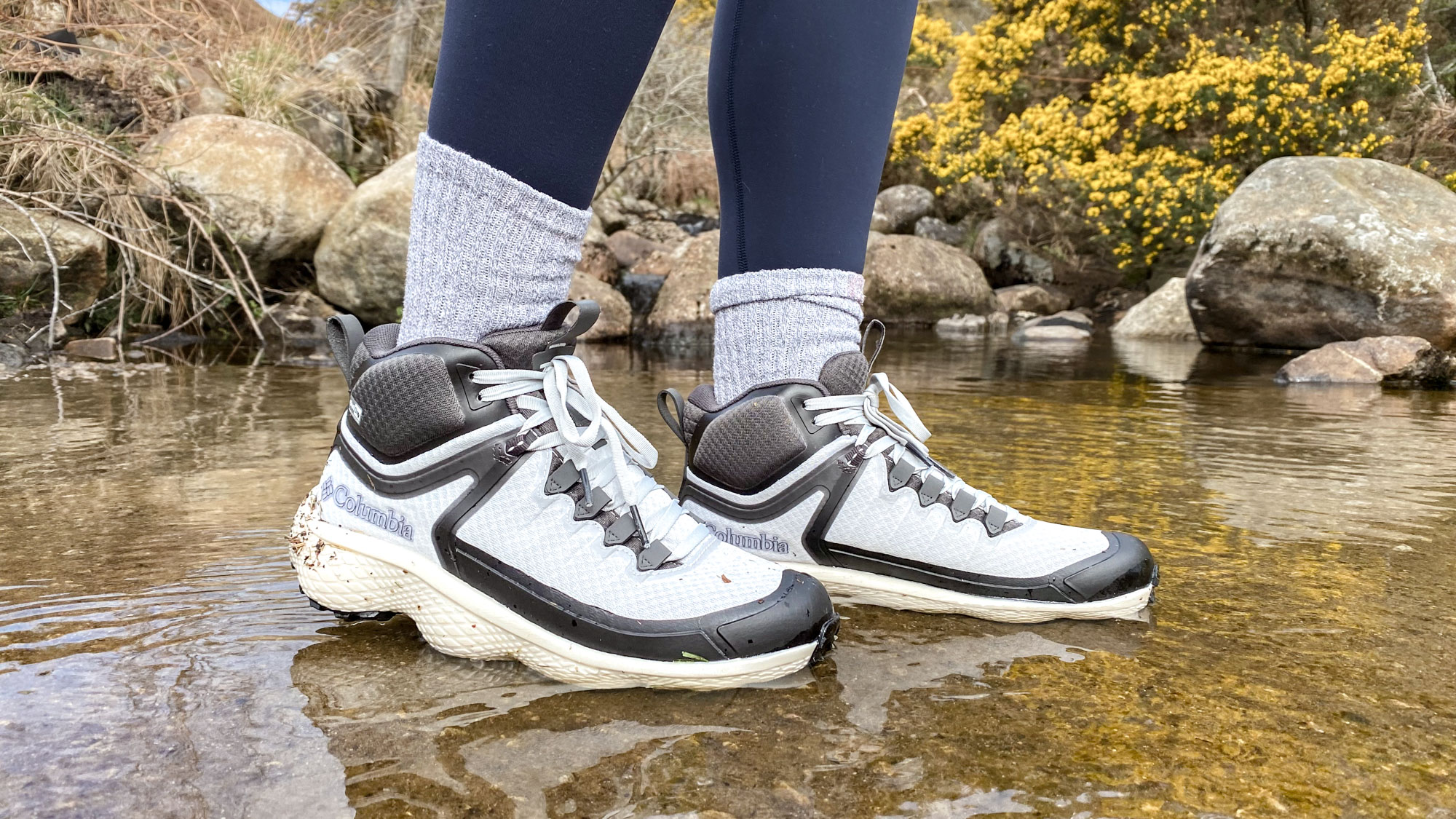
4. Columbia Escape Thrive Titanium OutDry Mid Shoe
Our expert review:
Specifications
Reasons to buy
Reasons to avoid
If you’ve ever slogged through a wet hike with soggy socks and blistered heels, you know how crucial a reliable waterproof boot can be. That’s exactly why the Columbia Escape Thrive Titanium OutDry Mid Shoe earned its place as the best waterproof hiking shoe in our guide.
I put these boots through a full week of rugged trails on Scotland’s Isle of Arran, tackling rain, mud, stream crossings, and they didn’t let in a drop. Thanks to Columbia’s OutDry membrane, the waterproofing is reliable and breathable, keeping your feet dry from both the elements and sweat. Paired with the Columbia’s Omni-MAX cushioning tech, the Escape Thrive Mid also delivers all-day comfort and stability across.
During testing, I was really pleased with how well they broke in with no painful adjustment period. The integrated Navic Fit System (aka the lacing system on the upper of the shoe) helped lock the heel in place and provided a secure fit that didn’t allow any wobbles on uneven or steep ground. Meanwhile, the boot's Adapt Trax outsole gives some serious grip.
Looks-wise, this is a boot that looks great. The Escape Thrive's offer a more modern, low-profile design than the clunky options you often see in waterproof categories, making them easy to pair with more casual walking gear, too.
While the mid-height design may not be ideal for those needing extra ankle support or planning deep winter treks (they aren’t insulated), for most three-season hikes, these are a rock-solid choice.
Best hiking boots for speed
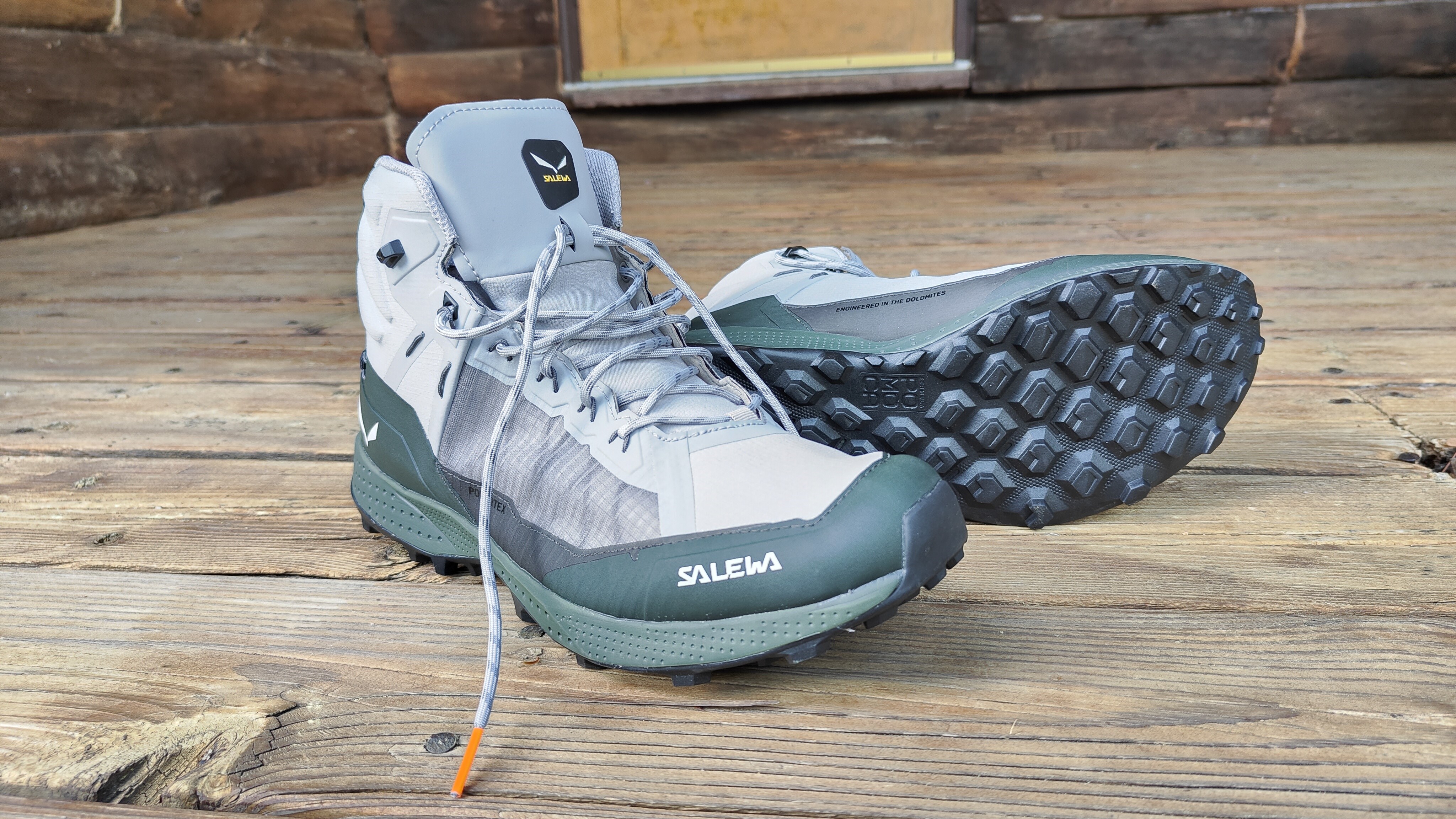
5. Salewa Pedroc Pro PowerTex Mid PTX
Our expert review:
Specifications
Reasons to buy
Reasons to avoid
Hiking boots today can be as much of a fashion statement as they can be a technical tool that can make or break a serious mountain hike. Salewa manages to combine both in its Pedroc Pro Powertex Mid PTX, one of the most comfortable boots we tested.
The $199.95 Pedroc Pro PowerTex Mid PTX is a mid-height technical hiking boot boasting a lightweight and impressively breathable design intended for quick ascents. However, it's also waterproof to fend off sudden downpours and has enough strength and padding to protect your ankles against slip-ups on rocky terrain — not that we ever had any reason to doubt the Pedroc outsole's confidence-inducing adhesion.
Salewa touts its boots as "blister-free" (at least for the first year), and in our many miles and weeks of testing, we had no reason to doubt their claim. The Pedroc Pro Powertex are comfortable yet snug, employing a similar lacing system and net of Kevlar cables used on the ultra-light Pedroc Air. It makes for a nice snug fit without binding or pinching, and we found it even accommodates wide feet within its regular form factor.
If you were looking for evidence that Italian designers have an edge when it comes to making products that are both functional and stylish, you should look no further than our two top hiking boots here. With roots in Germany, Salewa is now based in northern Italy, as is Scarpa, the other leading Italian in our lineup. Both the Salewa Pedroc Pro Powertex and the Scarpa Rush 2 Mid GTX excel in terms of comfort, surefootedness, and style, making them equally at home on the narrow streets of Moderna or the stunning slopes of the Dolomites.
Best low-cut hiking boots

6. Salewa Pedroc Air
Our expert review:
Specifications
Reasons to buy
Reasons to avoid
If you're looking for a trail companion that can keep up with rapid ascents and give you an extra boost of confidence navigating rocky hikes on a hot summer day, look no further than the $149.95 Salewa Pedroc Air hikers.
The Pedroc Airs are the lightest hikers we tested. They have a breathable knitted mesh upper wrapped in a net of Kevlar cables. These provide a soft, flexible feel but with enough strength that you don't feel your feet are vulnerable to the elements. Better still, the Pomoca outsoles are super sticky, delivering extra confidence on steep descents.
Surprisingly, we found the lightweight EVA midsole offered the right mix of shock absorption and stability to also tame city streets. Indeed, the Pedroc Air was so grippy and light that they had us skipping from rock to rock and from curb to curb (we just couldn't help ourselves). And yet, we never had cause to doubt that the Salewa hikers would hold up to our over-exuberant daily treks. In fact, the only weakness we could find with the Salewa Pedroc Airs is that our feet did feel the dampness in heavy downpours.
Best mid-cut hiking boots
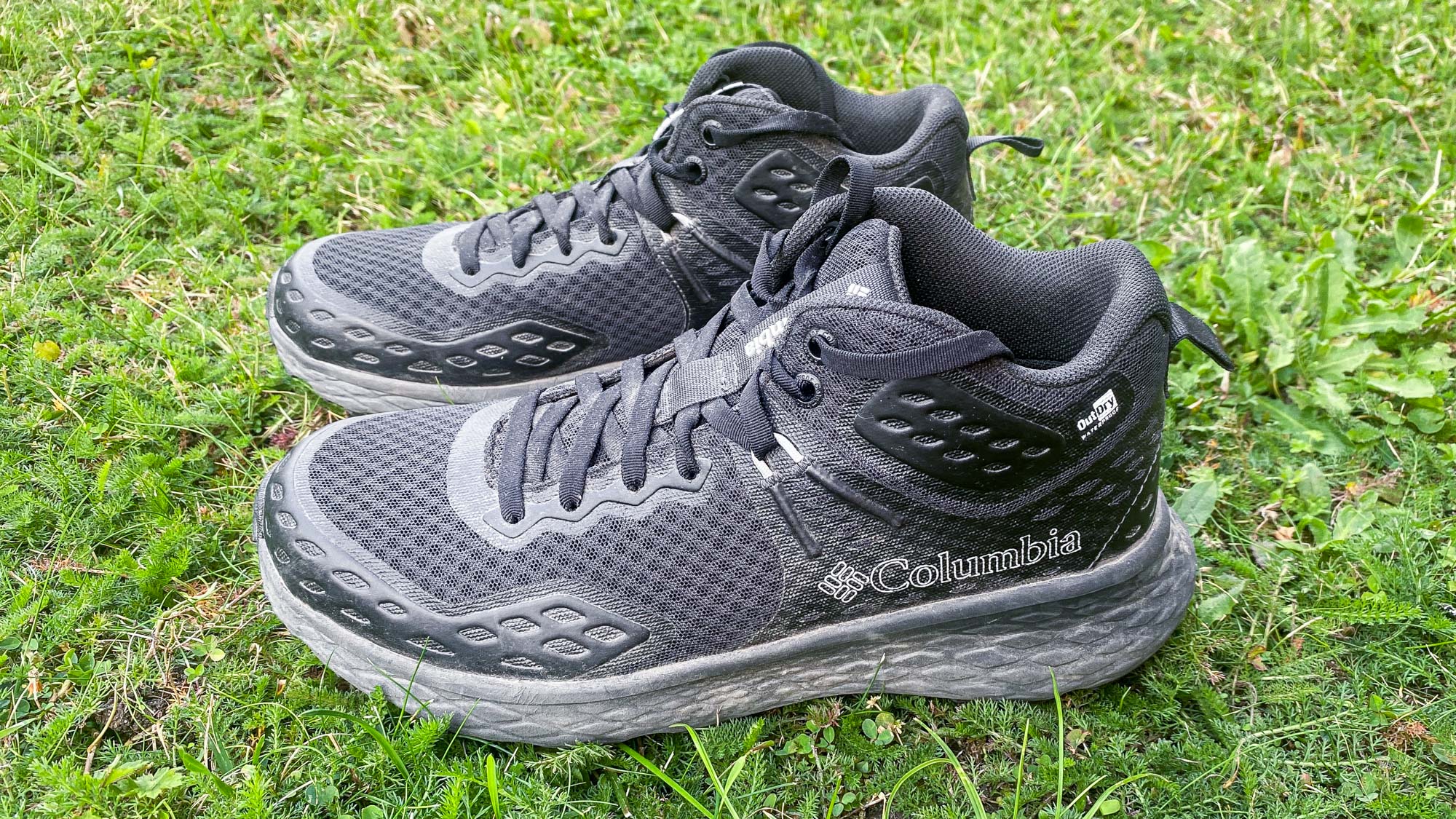
7. Columbia Konos TRS OutDry Mid
Our expert review:
Specifications
Reasons to buy
Reasons to avoid
Tested over three days hiking the Swiss Alps' Val d'Anniviers, I can confirm that the Columbia Konos TRS OutDry Mid Shoes can handle a whole range of terrains—uneven mountain climbs, rocky paths, muddy trails, and wet meadows—despite their less traditional appearance.
They feature great traction from the outsole, feel superbly comfortable on foot with the heel cradling midsole, keep the feet dry in damp conditions thanks to the waterproof OutDry upper, and are perfectly breathable in hotter climates.
The mid-cut design offers a trainer-like aesthetic and provides enough ankle support for a mix of trails. The shoe is impressively lightweight, well-cushioned, and comfortable even after 10+ hours of wear.
The trainer style of this mid-cut hiking boot may not appeal to those who prefer a more traditional high-cut hiking boot. Also, the mesh upper which makes the shoe nice and breathable is a little challenging to clean after muddy hikes.
That being said, if you’re looking for a lightweight, trail-ready shoe that’s comfortable straight out of the box, the Columbia Konos TRS OutDry Mid Shoes deliver excellent performance at a reasonable price. They’re an excellent alternative to bulkier hiking boots for casual adventurers.
Best hiking boots for mixed terrain
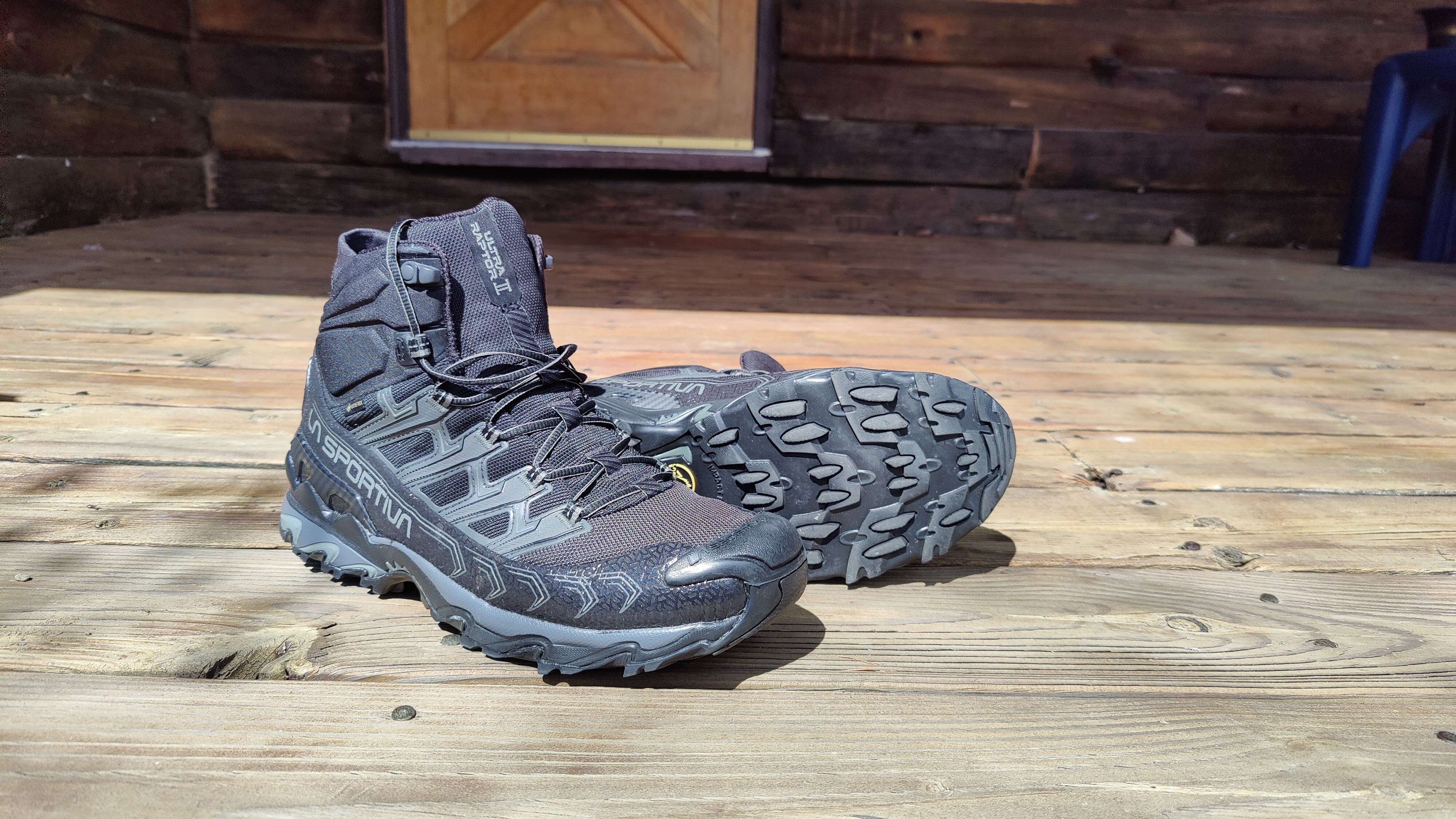
8. La Sportiva Ultra Raptor II GTX
Our expert review:
Specifications
Reasons to buy
Reasons to avoid
For occasional hikes and everyday comfort, La Sportiva's Ultra Raptor II GTX is hard to beat. They are forgiving and light enough to be worn all day, grippy enough to handle slippery trails, and subtle enough to wear in most offices.
Using Gore-Tex for waterproofing and an Ortholite interior sole to keep your feet comfortable, La Sportiva deploys some unique elements to make everything just a little bit kinder to your feet. The boots use an elastic material around the counter lining, for example, with a folded-over piece of material to help you pull the boots on. It's easy on your Achilles tendon, and unlike the usual loops at the heel of most boots, it won't get caught on twigs and underbrush.
The outsole of the Ultra Raptor II deploys La Sportiva's own design intended to prevent you from sliding downhill. The company calls it an "impact brake system" with forward-oriented oval studs, and we have found it particularly effective in some of the company's trail running shoes, as well as with these boots on loose dirt downhills. In fact, we found these boots had the stickiest soles, second only to the Innov-8 boots in this review.
One additional piece of advice: these La Sportiva boots tend to use a smaller form than other models, so we recommended going up a half size from your usual to get the right fit.
Best technical hiking boots
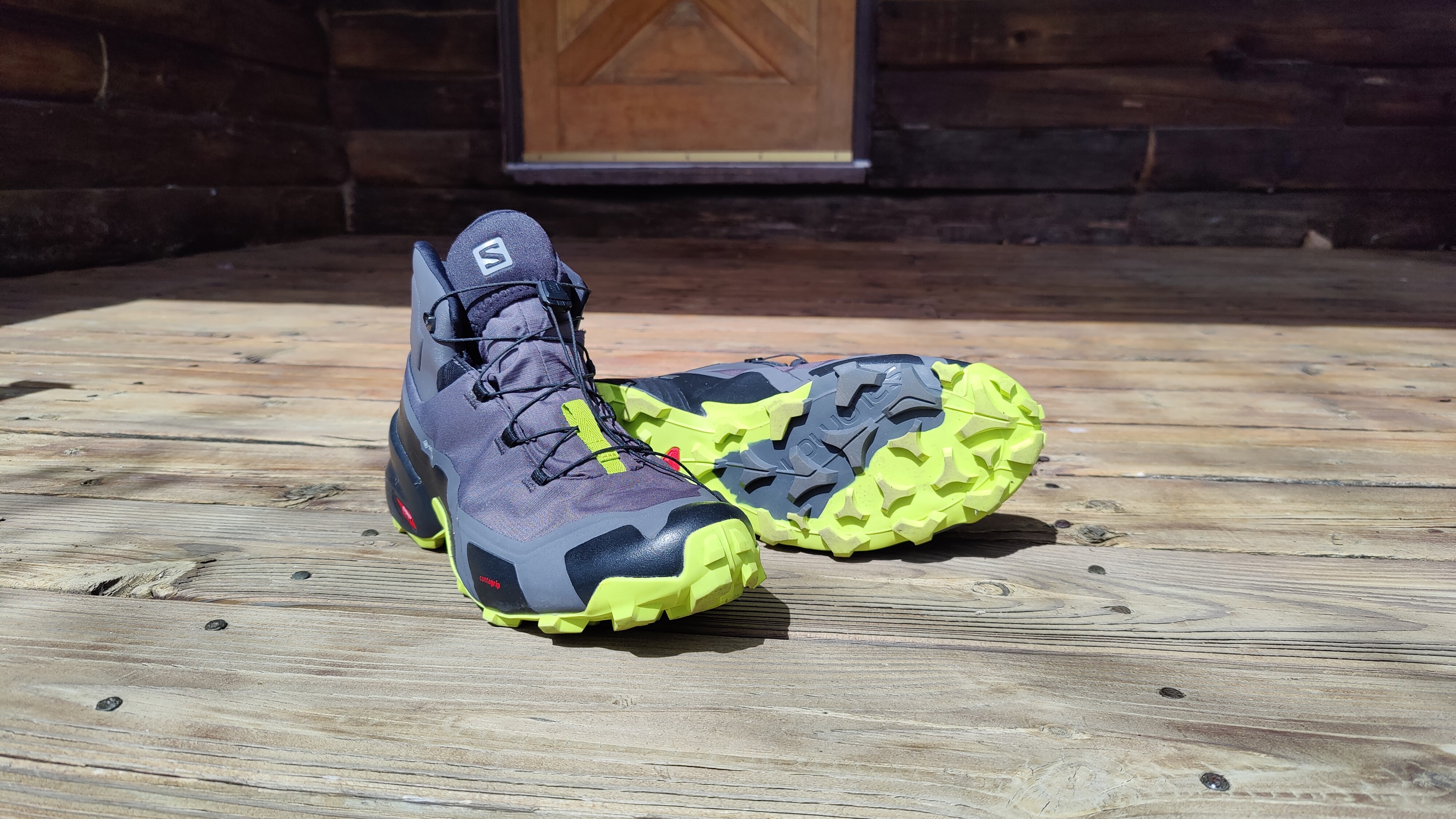
9. Salomon Cross Hike Mid Gore-Tex
Our expert review:
Specifications
Reasons to buy
Reasons to avoid
With a name more typically associated with skis and bindings, Salomon's Cross Hike boots make the ideal footwear for an apres ski trek. Their design is reminiscent of high-tech alpine ski boots, yet their lightweight offers your feet relief after a day of downhill skiing.
A close competitor to the Scarpa Rush 2 in this review, the Salomon Cross Hike boots similarly boast Gore-Tex waterproofing an Ortholite inner sole and very comfortable uppers. For the outsole, Salomon uses a design with large lugs that work well in loose dirt and slush; they're less forgiving, however, on city sidewalks. Our pair of Cross Hikes had a distinctive neon sole, which we found was not as grippy on slick rocks in the rain as other boots.
The most distinctive aspect of the Salomon Cross Hikes, however, is its "quicklace" system. Rather than standard laces, the shoes use a fixed, single-pull tie, which you then tuck into a pocket at the top of the tongue. We've never found the approach that much faster than tying up standard laces, but it does give the boots a tidier and smoother appearance. Occasionally, we found the excess lacing loop dangling over our boots, although it never snagged on anything on our hikes. Still, the quicklace system receives mixed reactions. You'll either love it or hate it.
How to choose the best hiking boots for you
Here's a few pointers.
Comfort
The first priority for any hiker should be comfort. The bad old days of having to break in stiff and uncomfortable boots before a trip are thankfully a thing of the past. We still recommend that you spend a couple of days in a new pair of boots before committing them to two weeks of wandering around the fjords of Norway, but when you first put on new boots, they should feel comfortable from the start. With most of today's technical materials, they aren't going to get more comfortable the more miles you put in.
Weather
Dealing with weather is the second factor for hikers. If crossing the lava flows of Iceland is what you're after, you're going to have some days of rain, and you won't have time to waste drying out your boots along the way. So waterproof boots are a necessity, including gusseted tongues, which are attached to the shoe all along the sides to keep out dirt and water. Most of the models we reviewed have both features.
Terrain
When choosing the right hiking boot, also consider the type of trekking you usually prefer. Different outsoles are often designed for different types of hiking. For example, softer, stickier soles are great for scrambling over smooth rocks and slippery terrain, while some soles, such as the particular Vibram sole used in the Merrell Moab 3 boots are specifically intended to deliver extra traction on melting ice. Furthermore, harder soles underfoot may not provide much shock absorption but will deliver more protection from jagged rocks and uneven terrain.
Materials
Finally, consider the construction of the hiking boots. If you're a hot-weather, public trail day hiker, you'll want a boot that is light and breathable. On the other hand, if you often find yourself on more challenging hikes in cooler climates, you'd be better served choosing a heavier boot with more foot protection and greater warmth.
How we test the best hiking boots
All the boots on this list have been tested over numerous miles in different climates and on different terrains. When we were walking, we were looking for how well they grip different footpaths, how waterproof they are and how supportive and comfortable they feel by the final miles of a trek.
We also looked for extras like toe protection — designed to stop you from losing a toenail if you hit a rock on the trail, ankle protection and Ortholite insoles. Below, we have tested a mix of lightweight hiking boots for softer trails, and more high-tech boots for advanced hiking.
Features compared
| Header Cell - Column 0 | Scarpa Rush 2 Mid GTX | Salewa Pedroc Pro PowerTex Mid PTX | Hoka Anacapa Mid GORE-TEX | Timberland Mt. Maddsen | Salewa Pedroc Air | Columbia Konos TRS OutDry Mid | La Sportiva Ultra Raptor II GTX | Inov-8 RocFly G 390 | Merrell Moab 3 Mid Waterproof | Asolo Fugitive GTX | Salomon Cross Hike Mid Gore-Tex | La Sportiva TX Hike GTX | Danner Trail 2650 Campo GTX |
|---|---|---|---|---|---|---|---|---|---|---|---|---|---|
Weight | 415g | 390g | 384g | 1,361g | 310g | 326g | 470g | 390g | 1012g | 690g | 396g | 550g | 382g |
Waterproof | Yes, Gore-Tex | Yes, PowerTex | Yes | Yes, TimberDry | No (water repellent) | Yes | Yes, Gore-Tex | No | Yes, M Select | Yes, Gore-Tex | Yes, Gore-Tex | Yes, Gore-Tex | Yes, Gore-Tex |
Price | $219 | $200 | $130 - $195 | $120 | $160 | $100 | $150 | $120 | $150 | $300 | $190 | $200 | $200 |
More from Tom's Guide
- How to stay safe when hiking alone
- Best hikes in Yosemite National Park
- The best hikes in Yellowstone National Park
Get instant access to breaking news, the hottest reviews, great deals and helpful tips.
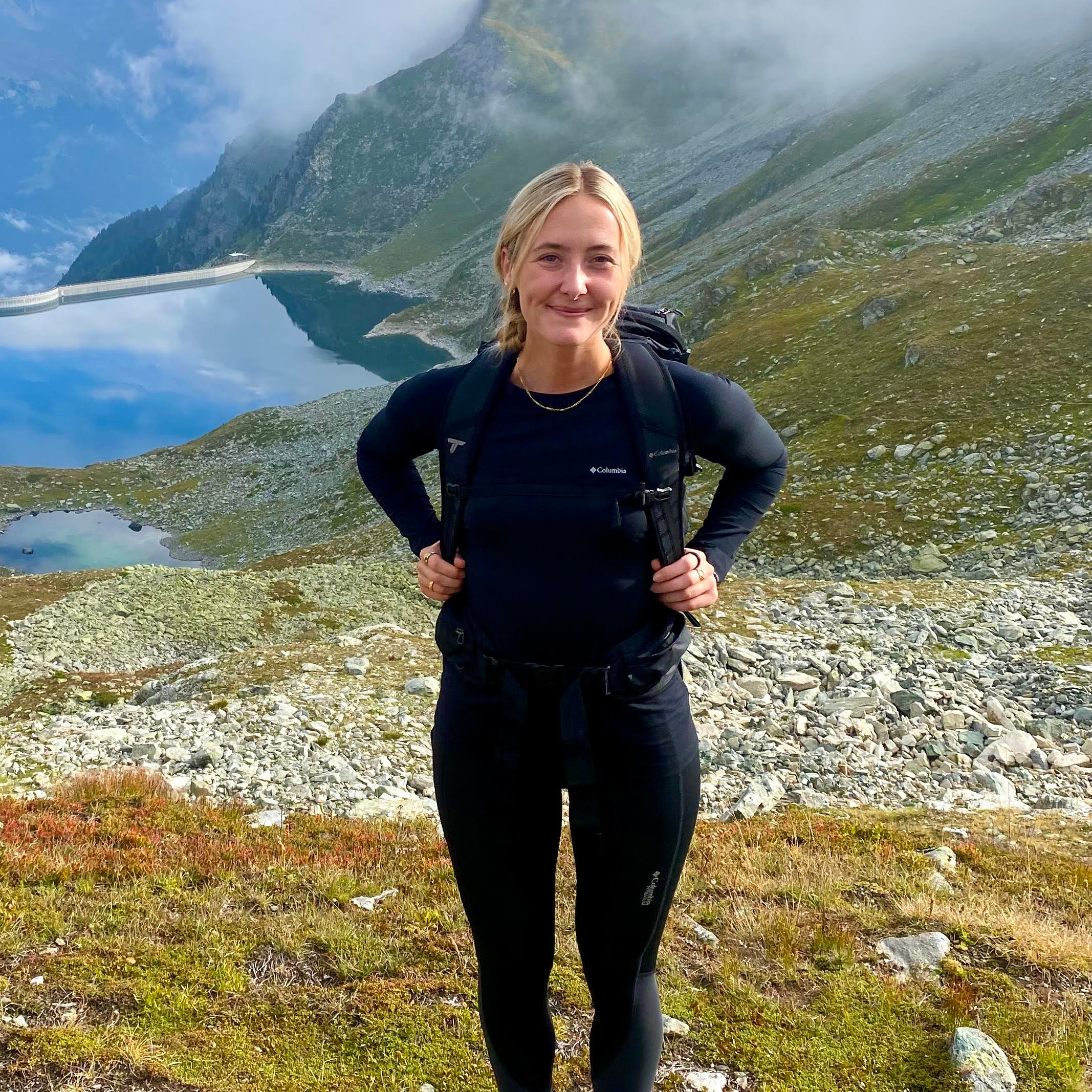
Jessica has been a fitness writer at Tom’s Guide since 2023, bringing three years of experience writing about health, fitness, and the great outdoors. Her passion for exercise began during her childhood, where she spent weekends hiking and competing in local athletics club events. After earning a master’s degree in journalism from Cardiff University, Jessica found the perfect way to combine her love of storytelling and fitness into a career.
Jessica is passionate about testing fitness gear and tech, using her reviews to help readers make informed buying decisions. She ran her first marathon in April 2024, finishing it in 3 hours and 48 minutes. Through her training, she’s developed a deep understanding of what it takes to grow as a runner, from effective workouts and recovery techniques to selecting the right gear for every challenge.
When she’s not at her desk, Jessica enjoys spending time in the kitchen crafting new recipes, braving cold water swims and hiking.
- Sam HopesFitness Editor and Coach
